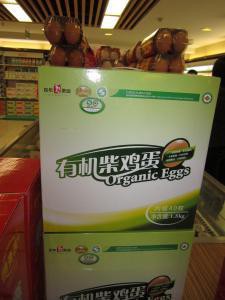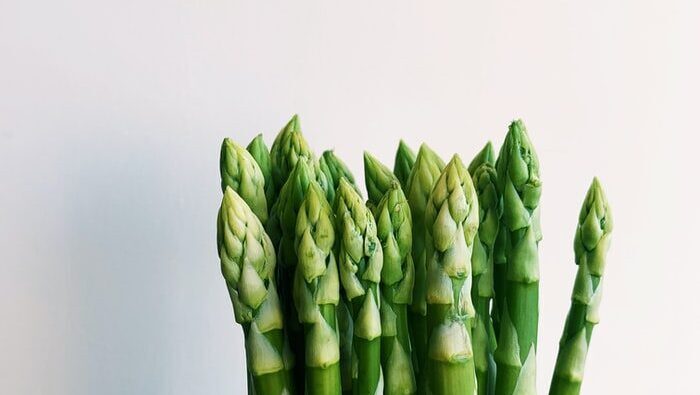6 min read
Written by Steffanie Scott

What does organic agriculture look like in China? How is it perceived? And are there any ‘alternative food networks’ there to speak of?

For the past two years, I’ve been working with three doctoral students (Theresa Schumilas — who has written up her own blog about the trip — and Aijuan Chen and Zhenzhong Si — Theresa, Zhenzhong, and I are pictured on the left). We’ve been trying to understand and explain the dynamics of the burgeoning organic agriculture sector and other ‘alternative’ food initiatives in China.
I spent 5 weeks doing fieldwork there last year, and 7 weeks in April and May of this year, visiting organic farms, and meeting with representatives of NGOs, consumer associations, government agencies, organic certification bodies, and researchers across 10 different provinces and municipalities.
It has been a fascinating exploration — getting a sense of government and big business interests in the growing market for organic foods, but also, and more interestingly, seeking out community-based initiatives (buying clubs, organic farmers’ markets, restaurants) and CSAs (community support agriculture farms), which are also expanding rapidly, and sometimes offering plots (akin to community garden plots) for urban folks to rent, at a fairly high price.
We found surprisingly little emphasis on the ecological dimensions of organic agriculture. I know this sounds like a paradox: the management of nature, rather than working with nature, seems to prevail. I couldn’t believe the number of organic farms we saw that were meticulously weed-less, and greenhouses dominate the landscape across much of northern China, even in climates that don’t really need them. Although there are some exceptions, producing organic food is largely a high-end market opportunity for increasingly consolidated enterprises — a trend that seems to be reinforced by extensive government subsidies for already successful companies.

National standards for organic certification have been revised to make them more costly and bureaucratic, and thus inaccessible for most small-scale operators and farmer cooperatives. Small farmers are typically involved in organic production only as workers on large farms, or as contracted farmers (sometimes in farmer cooperatives) for large enterprises.
We also found little evidence of the ‘social justice’ dimensions in any ecological food initiatives — little interest among citizens in consciously supporting the livelihoods of small-scale farmers. Many ‘CSAs’ are little more than food delivery businesses or immaculately manicured agri-tourism farms for privileged urbanites to come and pick a few fruits and veggies as a recreational activity.
But we also visited Anlong village in Sichuan province, home to the first CSA in China in 2007, and met with the first CSA farmers there, Mrs Li. Despite being called ‘silly’ by many fellow farmers, she had a deep environmental ethic, and saw ecological agriculture as a way to also foster harmony among people. Too many farmers are only motivated by profits, and are unwillingness to adopt a long-term view and engage in ecological farming. She considers small scale farming to be more stable, and — in contrast to the predominant view in China — more effective to solve the food safety problems that plague the country.
Also in Chengdu (capital of Sichuan province), we had an inspiring five-hour interview including a home-made lunch of brown rice and millet, wild Chinese fiddleheads, and fresh tofu (from soybeans hand-ground on a traditional stone grinder in our interviewee’s apartment)! Our interviewees were members of Green Heartland, a consumer association somewhat akin to a food buying club. A couple of years ago a group of well-educated urbanite friends started seeking out direct sources of ecologically-produced foods. Gradually they started publicizing this for others to join, and they organized activities for people to meet farmers and sample their products.

They see themselves as a consumer group that helps farmers to grow healthy food. Although they were originally just motivated by wanting to eat good food, they came to discover that what they really wanted to do was to rebuild connections among people, and between people and nature.
The organic produce in these operations, as in most CSAs, tends to be uncertified. These alternative models seem to be emerging in China because the certification system is not trusted due to many cases of fraud. Instead, the perception of quality in buying clubs or consumer associations is based on the trust, or ‘conscience certification’, between producers and eaters.
Paradoxically, while globally, ecological agriculture began its emergence as an ‘alternative’ to (subvert) industrial agriculture, in China it began (in the 1990s) already ‘conventionalized’, and is serving in many ways as a vehicle for reinforcing the government’s priorities for agricultural modernization — absent of any language of justice, food sovereignty, autonomy, empowerment, or fair trade. ‘Scattered’ small farmers are considered as backward, hard to monitor or control, and unreliable in terms of maintaining production standards. For their part, Chinese consumers are mainly motivated by avoiding unsafe food, so do not necessarily care about environmental protection or farmer livelihoods either.
Thus, many ‘alternative’ ecological agriculture practices in China are more about alternative production practices (i.e., limiting chemical use) than about supporting small-scale farmers and alternative retail outlets. And yet, we can also find counter-currents to this trend: alternative food networks in China that include values-oriented CSA farms, organic farmers’ markets, and informal food procurement networks. Although they are still a very small fraction of the entire food system in China, these alternatives represent a critical part of it, and will be an important trend to watch.
It was also exciting through this work to connect with community organizers who were enthusiastic to hear about food system initiatives going on in Canada. I am hoping to keep in touch with these contacts and also expand my research in China by doing a regional food system assessment around Nanjing that includes quantitative and qualitative, community consultation dimensions.
We’ve created a website with a lot more photos from our trip & a more detailed summary of the research project.
… As a side note (or ‘foodnote’), my 7 week trip this past spring was also the longest stretch I can remember without consuming western food, including chocolate, black tea, and cheese! It’s much harder than I expected to even find a western food restaurant (I mean anything other than the omni-present McDonald’s, KFC, and Pizza Hut, which seem to be as prolific as Tim Horton’s in Ontario).
Chinese breakfast buffets in our budget hotels typically included rice porridge (congee, sometimes with millet added), and topped with pickled vegetables, ‘Chinese doughnuts’ (unsweetened deep-fried dough in long strips), boiled eggs (sometimes boiled in tea), stir-fried greens, dumplings, steamed buns (plain, or with fillings of meat, veggies, or sweet bean paste), white bread and jam, hot milk or soymilk, watermelon slices, and small cartons of sweetened yoghurt. Dessert is an unknown concept in Chinese cuisine, but sometimes sweet, dessert-like dishes, are included with the main meal.
Despite hearing about widespread contamination of soil and water sources, the food was absolutely amazing — a phenomenal variety of dishes and unbelievable VIP treatment for a foreign academic. The most over-the-top meal was a lunch comprised of 26 different dishes. Chinese cuisine has in an infinite range of dishes, and is vastly more tasty than you might imagine if you’ve only ever been exposed to Chinese-Canadian food.
